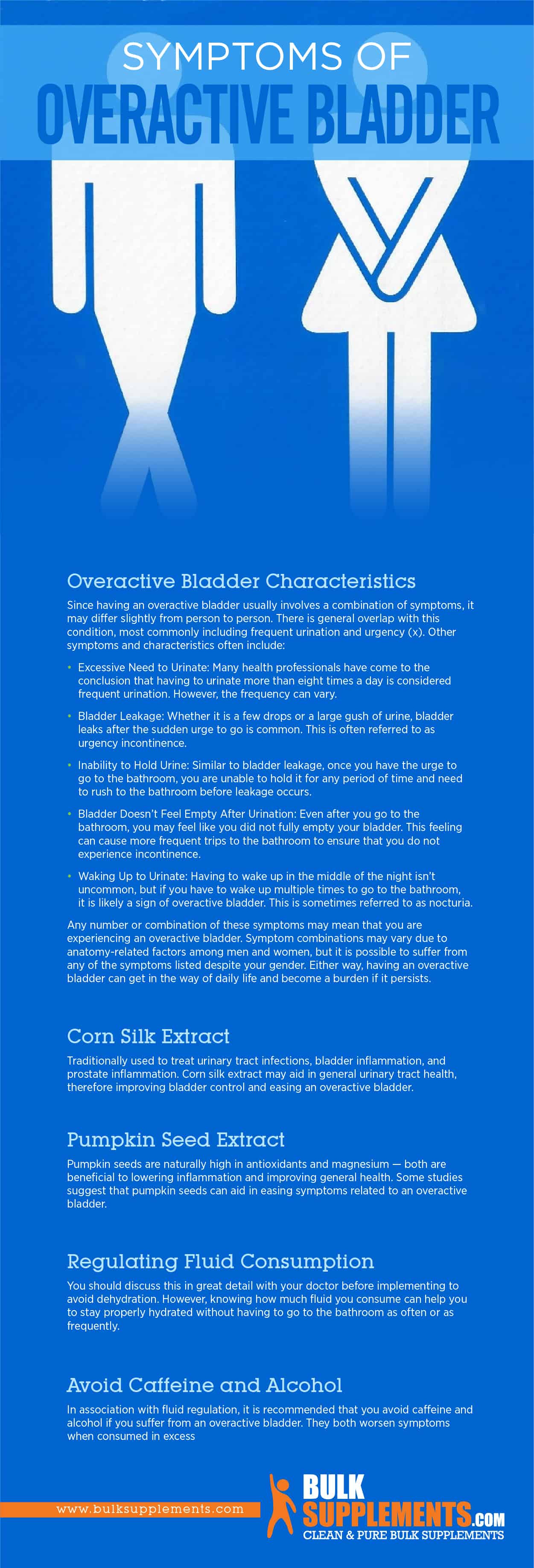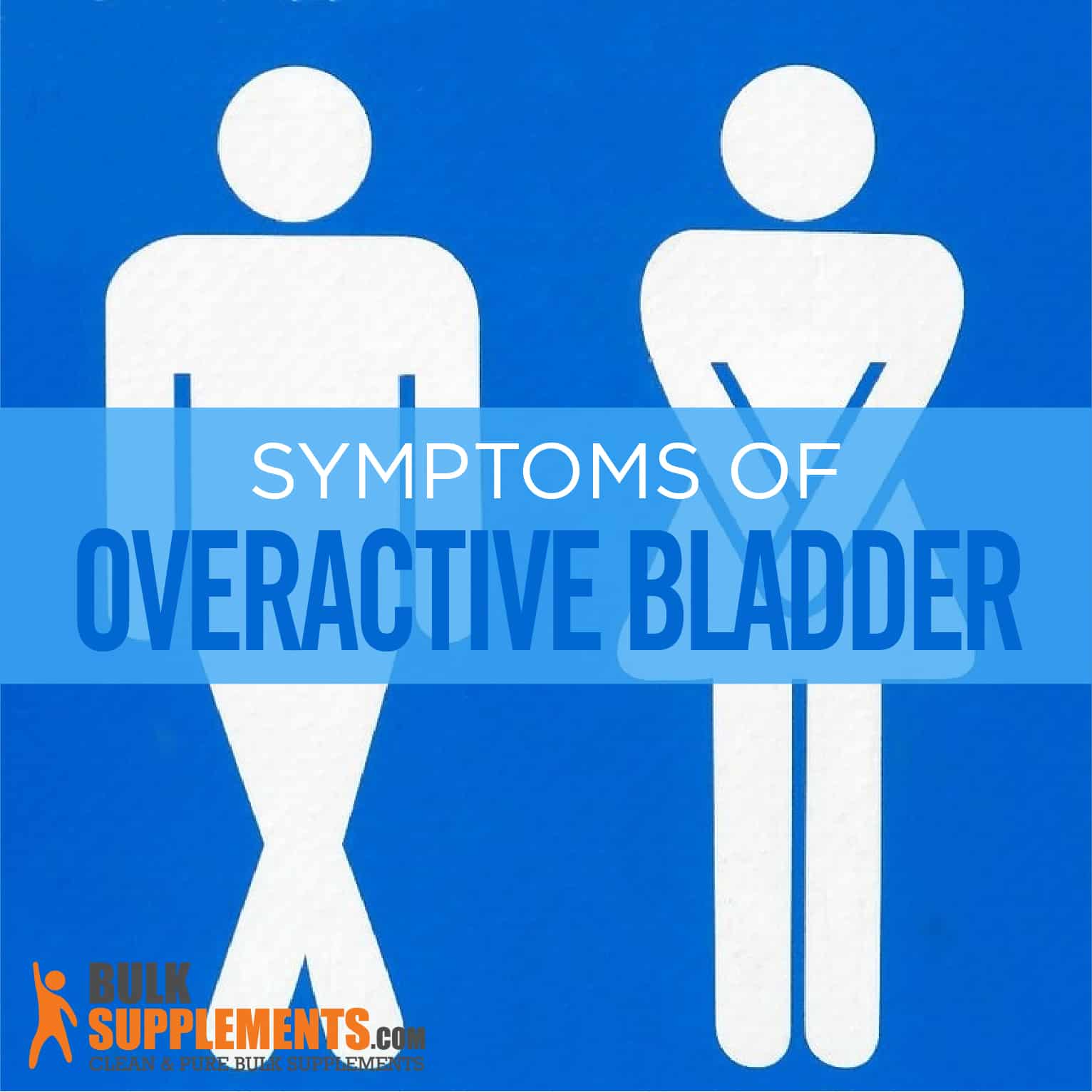What is an Overactive Bladder?
Having the urgency to urinate or an inability to control how often you need to relieve yourself could mean that you have an overactive bladder. Before you concern yourself with the possibility of having this health concern, educate yourself on this issue. Read this article, so you have an understanding and can think with the data.
Having an overactive bladder (OAB) is not normal, regardless of age, sex, or conditional health. Some health professionals consider it a disease. Therefore, a group of urinary symptoms defines it as a health condition related to control and frequency of passing water.
If you have such a health condition, you may have more doctor visits than before this concern. According to a study, people with OAB, on average, increase their doctor visits by 86 percent. (x)
Though the report stigmatizes that it may cause depression is just a speculation, and overdramatizing the fundamental issue of taking care of yourself by eating well, taking supplements and exercising. Studies show those who follow a healthy lifestyle are healthier and have a better outlook on life. (x) Still, it is best to check with your physician before starting any new lifestyle change, including supplements.
History of Overactive Bladder
In 1997, OAB became well known when Doctors Abrams and Wein explored the issue and formalized the condition based on many urodynamics, treating incontinence and pressure in the bladder. With that, the subject is relatively young and scientific studies of causes, prevention and natural remedies have continued. (x)
Two studies that focused on the progressive behavior of OAB and Stress Urinary Incontinence (SUI) showed that women over 40 notice a change in their bathroom habits. As they age, the symptoms become prevalent around 60 and 80 years old — especially if they have both health concerns. (x)
Overactive Bladder Characteristics
Since having an overactive bladder usually involves a combination of symptoms, it may differ slightly from person to person. There is general overlap with this condition, most commonly including frequent urination and urgency. (x) Other symptoms and characteristics often include:
- Excessive Need to Urinate
A good deal of health professionals concluded that having to urinate over eight times a day may be too frequent urination. However, the frequency can vary. If you drink lots of water throughout the day, well, you urinate more than those who don’t drink enough water throughout the day. That is good because you are flushing out toxins from your body and keeping it hydrated. (x)
- Bladder Leakage
Whether it is a few drops or a large gush of urine, bladder leaks after the sudden urge to go are common. It refers to urgency incontinence. However, a survey reveals the possibility that urgency incontinence as a condition is flawed. (x)
- Inability to Hold Urine
Like bladder leakage, once you have the urge to go to the bathroom, you cannot hold it for any time and need to rush to the toilet before leakage occurs.
- Bladder Doesn’t Feel Empty After Urination
Even after you go to the bathroom, you may feel you did not fully empty your bladder. Actually, your bladder did not empty completely. This health condition causes more frequent trips to the toilet to ensure that you do not experience incontinence.
- Waking Up to Urinate
Having to wake up in the middle of the night isn’t uncommon, but if you have to wake up multiple times to go to the bathroom, it is likely a sign of an overactive bladder — sometimes referred to as nocturia.
Any number or combination of these symptoms may mean that you are experiencing an overactive bladder. Symptom combinations may vary because of anatomy-related factors among men and women, but it is possible to suffer from any of the symptoms listed despite your gender. Either way, having an overactive bladder can impede daily life and become a burden if it persists. (x)
Causes of Overactive Bladder
The causes of an overactive bladder can vary significantly from person to person. (x) The recommendation is to discuss the symptoms with a trusted health professional and get a diagnosis of the underlying condition causing them. The most common causes include:
- Nerve damage
- Catheter use
- Childbirth
- Structural problems with bladder
- Excessive intake of fluids
- Diabetes
- Alzheimer’s disease
- Parkinson’s disease or multiple sclerosis
- Stroke
- Overconsumption of alcohol
- Aging and menopause (low estrogen levels)
- Bladder stones or tumors
- Enlarged prostate
- Weakened and stretched bladder muscles
- Urinary tract infection
- Pregnancy
Many factors can cause an overactive bladder. The way your body functions, reacts, and responds to organs working together or not working together differs from person to person. Therefore, a condition like an overactive bladder usually requires specific and individualized treatment based on your comfort level. (x) (x)

Overactive Bladder Remedies and Supplements
Discovering the underlying cause of your overactive bladder will assist you in finding the proper treatment and lifestyle changes to pursue. There are several home remedies and supplements that can ease or even eliminate symptoms related to an overactive bladder. Of course, it is essential to consider other solutions in your regimen. You should consult your doctor before implementing dietary supplements to avoid adverse reactions and side effects.
Common home remedies for frequent urination include:
- Corn Silk Extract
They are traditionally used to treat urinary tract infections, bladder inflammation, and prostate inflammation. A scientific study performed on rats supported the effectiveness of this extract. Corn silk extract may aid urinary tract health, improving bladder control, and easing an overactive bladder. (x)
- Pumpkin Seed Extract
Pumpkin seeds are naturally high in antioxidants and magnesium — both beneficial to lower inflammation and improving general health. Some studies suggest that pumpkin seeds can ease symptoms related to an overactive bladder. One study performed on 45 subjects showed effective results using pumpkin seed oil extract. After taking the extract for six and 12 weeks, the subject noticed a positive change in the urinary disorders. (x)
- Regulating Fluid Consumption
It would help if you discussed this in great detail with your doctor before implementing it to avoid dehydration. However, knowing how much fluid you consume can help you stay adequately hydrated without going to the bathroom as often or as frequently.
Avoid Caffeine
In association with fluid regulation, medical professionals recommend avoiding caffeine if you suffer from an overactive bladder. A scientific study of nine women and three men between the ages of 21 and 40 with OAB proved that caffeine could increase the “feeling” the urge to go. They both worsen symptoms when consumed in excess. (x)
- Alcohol Stimulates Bladder Leaks
Medical professionals recommend avoiding alcohol if you have OAB. Alcohol does not cause OAB, but drinking the spirits may cause bladder leaks. As a diuretic, alcohol leads to your body urinating more often. It can also irritate your bladder and make your OAB even worse. (x)
- Avoid Irritating Foods
Certain foods can irritate your bladder and make OAB much worse. Therefore, try to avoid these foods: (x)
- Chocolate (contains caffeine)
- Carbonated drinks
- Spicy foods
- Citrus foods
- Acidic foods (tomatoes)
- Cranberry juice
- Sugar and artificial sweeteners
- Train Your Bladder
It may seem intimidating if you want to avoid bladder leakage, but this can strengthen muscles in your pelvic floor. To start, some people will go to the bathroom and stop their urine mid-flow from gaining control and building strength in a safe environment. Or try to hold your urine for an extra 5 to 10 minutes when you need to go. (x)
- Kegel Exercises
As withholding your urine, kegel exercises strengthen your pelvic floor muscles or “kegel muscles,” naturally. The exercises develop these muscles so that you can hold your urine and control possible leakage. Start these exercises now or the first sign of any urine problems. Begin doing the exercises every day until you notice a positive change. That way, you prevent further development, such as bladder leakage. (x)
A study performed on forty patients determined noticeable improvement after only four weeks. As with any form of exercise, it is best to perform kegel exercises to maintain your pelvic strength regularly. (x)
Above are just a few options when working on getting rid of an overactive bladder. Also, consider asking your doctor about any current natural solutions that you may try to help resolve the condition. Sometimes an overactive bladder is a side effect of prescription medications. Since there are many causes of an overactive bladder, it is essential to treat any underlying medical conditions. By doing so, you will also treat your overactive bladder.
Where to Buy Natural Supplements for Overactive Bladder?
You can purchase the above natural supplements at BulkSupplements.com. The company is an industry-leading manufacturer and distributor for pure dietary supplements. BulkSupplements.com is not just a consumer brand. It also supplies pure ingredients to other food and supplement brands to make their products. All products at BulkSupplements.com are manufactured and tested according to current and proper manufacturing practices.
Are you interested in trying these natural supplements? Contact BulkSupplements.com to place an order.
The Bottom Line
Having an overactive bladder can embarrass and interrupt your daily life. The condition is comparatively new to society since OAB officially became known as a malady in 1997. Knowing what to do and how to prevent it can help you get things back on track. An overactive bladder does not have to become a “normal” part of your life. There are ways to improve and get rid of symptoms related to the condition, and once diagnosed, the cause is better to treat naturally. Pumpkin seed oil extract, corn silk, training your bladder and kegel exercises seem to be the best options when confronted with this health concern. Of course, it is crucial to work closely with a trusted healthcare professional when treating this condition.
The statements in this article have not been evaluated by the Food and Drug Administration. These products are not intended to diagnose, treat, cure, or prevent any disease.


